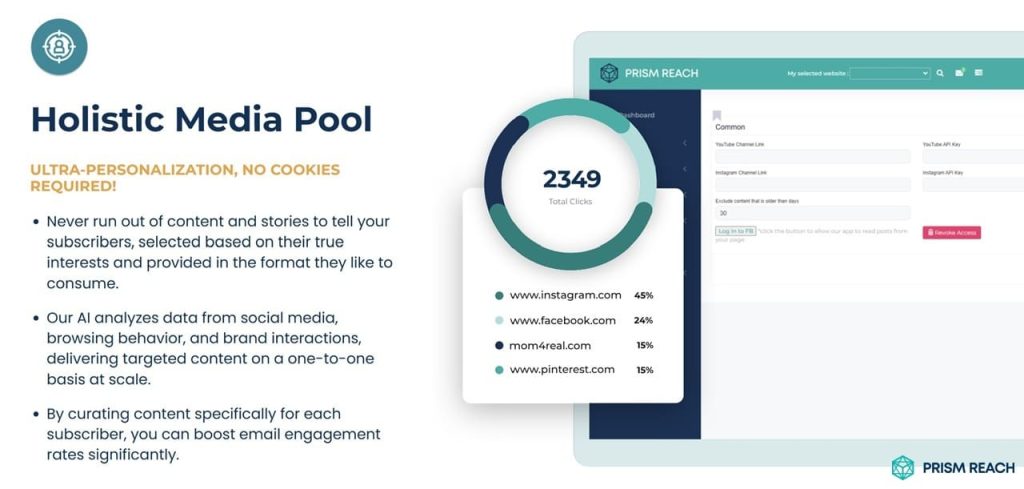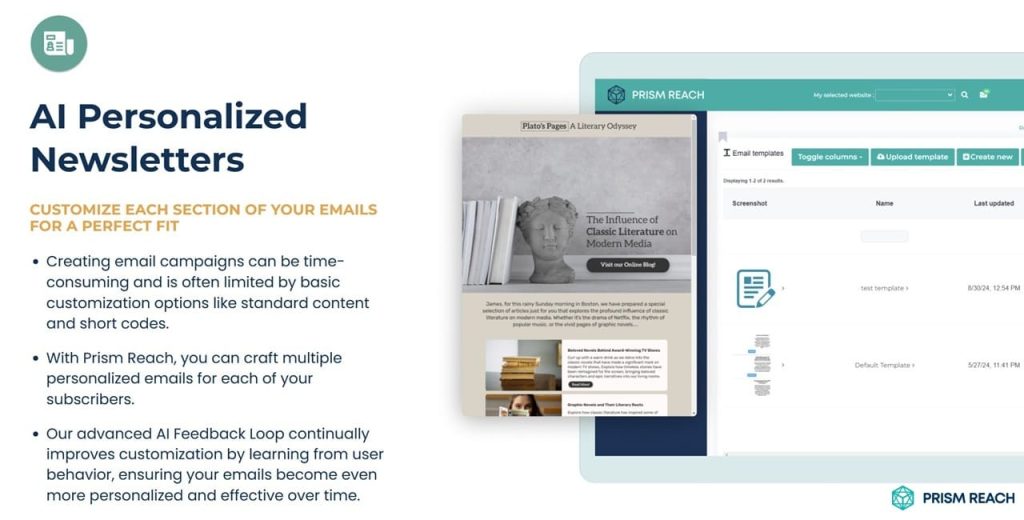Email marketing remains one of the most effective channels for customer engagement and revenue generation in today’s digital landscape. However, as inboxes become more crowded and consumer expectations evolve, the challenge lies not just in reaching your audience but in compelling them to take action. This is where conversion rate optimization becomes crucial.
Recent studies show that the average email marketing conversion rate across industries hovers around 1-5%. While this may seem modest, it underscores the significant potential for improvement and the substantial impact even small increases can have on your bottom line. As businesses strive to maximize their return on investment in digital marketing, understanding and implementing strategies to boost email conversion rates has never been more critical.
Key Facts
- Personalized email campaigns can increase conversion rates by up to 6 times compared to generic emails.
- Mobile-optimized emails account for 65% of all email opens, highlighting the importance of responsive design in conversion optimization.
- A/B testing email elements can lead to a 49% higher conversion rate, demonstrating the power of data-driven refinement in email marketing strategies.

Mastering the Art of Email Conversion: Strategies That Work
In the ever-evolving landscape of digital marketing, email remains a powerhouse for driving conversions. However, the key to success lies in implementing sophisticated strategies that go beyond basic email blasts. To truly master the art of email conversion, marketers must adopt a holistic approach that considers every aspect of the email journey—from the moment it lands in the inbox to the final click on the call-to-action.
This comprehensive strategy involves leveraging cutting-edge technologies, understanding user psychology, and continuously refining your approach based on data-driven insights. By focusing on these elements, businesses can create email campaigns that not only reach their audience but also compel them to take meaningful action, ultimately driving significant improvements in conversion rates and ROI.
Hidden Gem Strategies
Beyond the foundational strategies, there are lesser-known but highly effective tactics that can significantly boost your email marketing conversion rates. Here are five hidden gem strategies that leverage unique approaches to maximize engagement and drive conversions:
1. Interactive Content
Incorporate interactive elements like quizzes, polls, or image carousels within your emails. These features can increase engagement and lead to a 200-300% boost in click-through rates compared to static content. This level of interaction keeps recipients engaged and encourages them to take action.
- Quizzes: Engage users by asking questions related to your products or services, providing personalized recommendations based on their answers.
- Polls: Gather valuable feedback from your audience while keeping them engaged with your content.
- Image Carousels: Showcase multiple products or features in a single email, allowing users to browse without leaving their inbox.
2. Behavior-Based Trigger Emails
Automate emails based on specific user actions, such as cart abandonment or product views. These targeted reminders can significantly improve conversion rates, with studies showing that trigger-based emails can generate up to 24 times more revenue compared to standard campaigns.
- Cart Abandonment: Remind users of the items they left in their cart, possibly offering a discount to encourage completion of the purchase.
- Product Views: Follow up with users who viewed specific products, offering additional information or related products.
- Post-Purchase: Send thank-you emails with product recommendations or requests for reviews after a purchase.
3. Personalized Product Recommendations
Use data from previous purchases or browsing behavior to send tailored product recommendations. Personalized emails can lead to a 26% increase in open rates, directly influencing conversion potential.
- Dynamic Recommendations: Display products that are similar to or complement the items a user has previously interacted with.
- Segmentation: Tailor recommendations based on user segments, ensuring relevance to each group.
- Upselling and Cross-Selling: Encourage higher-value purchases by suggesting premium products or additional items.
4. Gamification Elements
Introduce gamification in your emails by offering rewards for completing certain actions, such as sharing or referring friends. This strategy not only engages users but also incentivizes them to convert, creating a fun and rewarding experience.
- Challenges: Encourage subscribers to complete specific tasks in exchange for rewards or discounts.
- Rewards Programs: Offer points or badges for engaging with your emails, which can be redeemed for products or services.
- Referral Incentives: Motivate subscribers to refer friends by providing rewards for each successful referral.
5. Clear and Unique CTAs
Instead of using generic CTAs like “Click Here,” experiment with unique, action-oriented phrases that create urgency or excitement (e.g., “Claim Your 20% Off Now!”). Emails with a single, clear CTA can see a 371% increase in sales compared to those with multiple options.
- Action-Oriented Language: Use verbs that encourage immediate action, such as “Download,” “Register,” or “Shop.”
- Visual Contrast: Design CTAs that stand out from the rest of the email content through color and placement.
- Urgency and Scarcity: Incorporate time-sensitive language to prompt quick action, such as “Limited Time Offer” or “Only a Few Left.”

Innovative Solutions by Prism Reach
While implementing these strategies can significantly improve your email marketing conversion rates, leveraging advanced technology can take your campaigns to the next level. This is where Prism Reach comes in. Our AI-powered SaaS solution is designed to revolutionize your email marketing efforts by automating and optimizing many of these conversion-boosting strategies.
Key Benefits of Prism Reach:
- Increased Engagement: Publishers report up to 40% higher engagement rates due to the personalized nature of the content.
- Higher Revenue: Tailored advertising and efficient content targeting lead to higher monetization rates for published newsletters.
- Improved Productivity: Automation and AI-driven insights significantly reduce the time required to create and manage campaigns.
Prism Reach’s core functionality revolves around its proprietary AI technology, which clusters website content and social media posts into relevant categories. This AI uses a variety of data points to create detailed user avatars, enabling personalized newsletter content that incorporates factors such as location, engagement history, and predicted interests. The system’s ability to analyze vast amounts of data allows for highly targeted marketing strategies.
Benefits of Prism Reach in Conversion Optimization
- Advanced Personalization: Prism Reach leverages AI to create highly personalized content without invasive data collection, respecting user privacy while enhancing engagement.
- Optimization Tools: The platform’s ability to determine optimal sending times and generate AI-enhanced sign-up forms addresses multiple aspects of conversion rate optimization in one comprehensive solution.
- Data Security: Prism Reach ensures GDPR compliance by hosting data within Europe and adhering to the highest standards of data protection, building trust with your audience.

6. Utilize Prism Reach’s AI-Powered Personalization
Prism Reach’s AI-driven personalization capabilities enable you to deliver highly relevant content based on subscriber behavior and preferences. By analyzing first-party data, Prism Reach ensures that each email is tailored to the individual, enhancing the user experience while maintaining privacy compliance.
7. Implement Adaptive Testing with Prism Reach
Prism Reach’s adaptive testing feature allows you to test multiple variations of your email content simultaneously. Unlike traditional A/B testing, adaptive testing automatically adjusts traffic distribution based on performance, identifying the best-performing content more efficiently. This ensures that your emails are always optimized for maximum engagement and conversion.
8. Leverage Prism Reach’s Data Security Features
With Prism Reach, data security is paramount. The platform includes advanced security measures such as encryption and regular security audits, ensuring that subscriber data is protected against breaches and unauthorized access. This commitment to data security builds trust with your audience and aligns with compliance requirements.
Upgrade Your Email Marketing with AI Personalization!
Conclusion
Increasing conversion rates in email marketing is a continuous process of refinement and optimization. By implementing the strategies outlined above and leveraging cutting-edge tools like Prism Reach, marketers can significantly enhance the effectiveness of their email campaigns. Remember, even small improvements in conversion rates can lead to substantial increases in revenue and ROI.
As the digital landscape evolves, so too must our approach to email marketing. By staying informed about best practices and embracing innovative technologies, businesses can ensure their email marketing efforts not only reach their audience but compel them to take action, driving growth and success in an increasingly competitive digital marketplace.